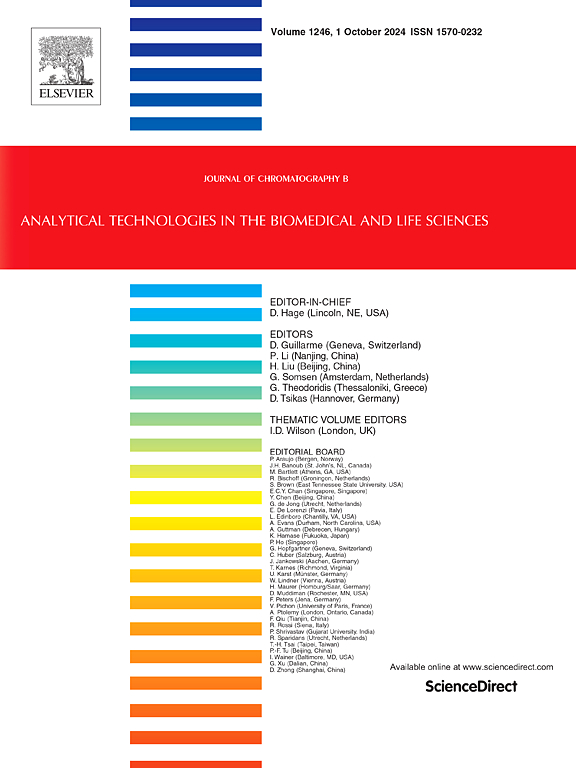Quantification of mycolic acids in different mycobacterial species by standard addition method through liquid chromatography mass spectrometry
Abstract
Mycobacteria possess unique and robust lipid profile responsible for their pathogenesis and drug resistance. Mycolic acid (MA) represents an attractive diagnostic biomarker being absent in humans, inert and known to modulate host-pathogen interaction. Accurate measurement of MA is significant to design efficient therapeutics. Despite considerable advances in Liquid chromatography coupled with tandem mass spectrometry (LC–MS/MS) based approaches, quantification of mycobacterial lipids including MA is still challenging mainly because of ion suppression effects due to complex matrix and non-availability of suitable internal standards for MA. The current study demonstrates the use of standard addition method (SAM) to circumvent this problem and provides a reliable and exhaustive analytical method to quantify mycobacterial MA based on reversed-phase ultra-high-performance liquid chromatography- mass spectrometry data acquisition. In this method, multiple reaction monitoring (MRM) has been applied, wherein 16 MRM channels or transitions have been chosen for quantification of alpha-, methoxy- and keto-MAs with C-24 and C-26 hydrocarbon chains that are actually best suited for TB diagnostics. We found that the overall methodological limit of detection and limit of quantification were in the range 0.05–0.71 ng/µl and 0.16–2.16 ng/µl. Taken together, SAM quantitative technique could serve as promising alternative for relative concentration determination of MA to aid medical research.

 求助内容:
求助内容: 应助结果提醒方式:
应助结果提醒方式:


